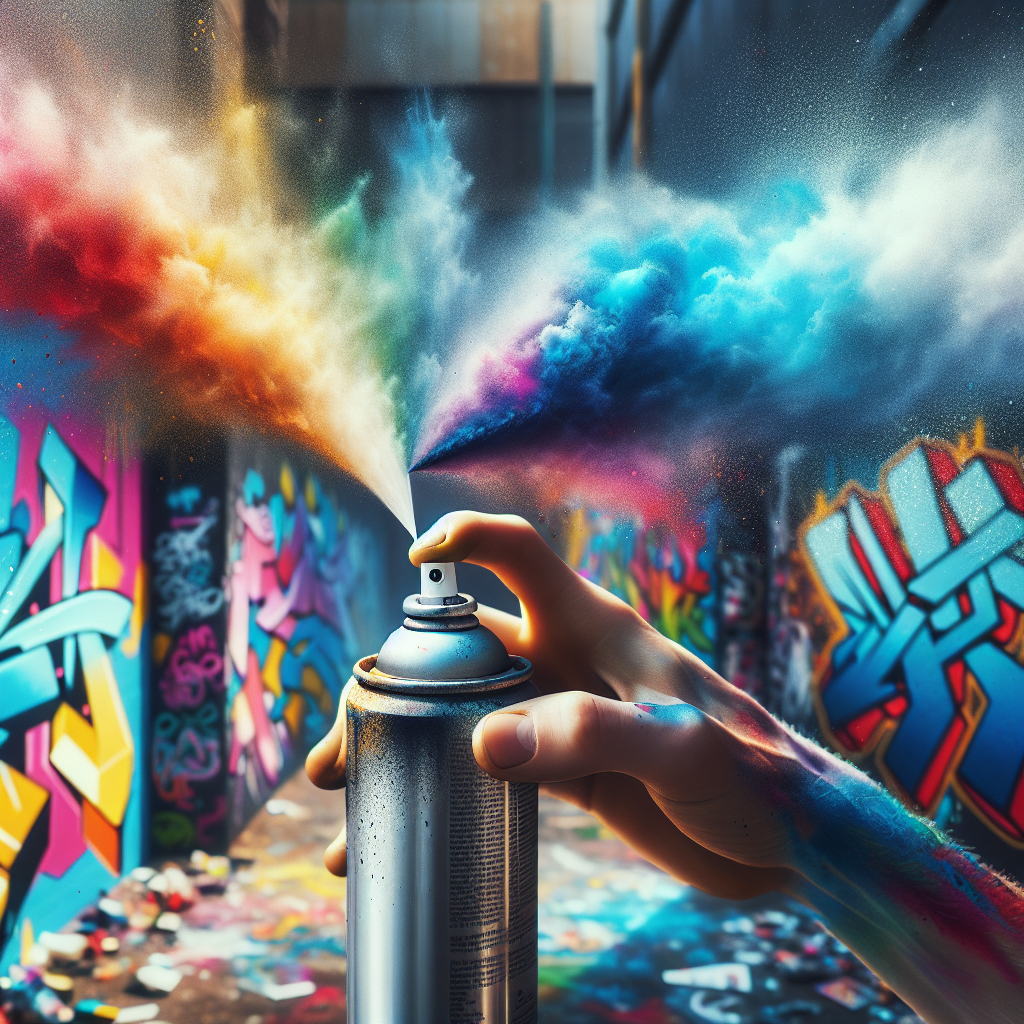In this article, you will learn the step-by-step process of spray painting a baseball helmet, ensuring a professional-looking finish. Mastering this skill will not only allow you to customize your helmet to match your team’s colors or your personal style, but it can also serve as a cost-effective solution to rejuvenating an old, worn-out helmet. By following the techniques and precautions discussed in this guide, you will be able to achieve a flawless spray paint application that will not only protect your helmet but also make a striking impact on the field.
Materials
To spray paint a baseball helmet, you will need the following materials:
Spray paint
Choose high-quality spray paint that is specifically designed for helmets. Look for paint that is durable and resistant to chipping and fading. It is important to select a paint that adheres well to the surface of the helmet.
Painter’s tape
Painter’s tape is essential for masking off areas of the helmet that you do not want to paint. This will ensure clean and precise lines when applying the paint.
Sandpaper
Use sandpaper to lightly sand the surface of the helmet before painting. This will help the paint adhere to the helmet better and create a smooth finish.
Drop cloth or newspapers
Before starting the spray painting process, it is important to protect your workspace. Lay down a drop cloth or newspapers to catch any overspray and prevent paint from getting on other surfaces.
Gloves
Wear gloves to protect your hands from the paint and chemicals. Choose gloves that provide good dexterity so that you can easily handle the helmet while painting.
Mask
A mask should be worn to protect your lungs from the fumes and particles generated during the spray painting process. Select a mask that is specifically designed for spray paint applications.
Helmet cleaner
Use a specialized helmet cleaner to thoroughly clean the helmet before painting. This will ensure that there is no dirt, grease, or substances on the surface that could interfere with the painting process.
Lint-free cloth
A lint-free cloth is essential for wiping down the helmet after sanding and cleaning. This will remove any dust or residue, ensuring a clean surface for painting.
Primer
Priming the helmet is an important step in the spray painting process. Choose a primer that is compatible with the spray paint you will be using. The primer will help the paint adhere to the helmet and provide a smooth base for the color coats.
Preparation
Before you begin spray painting your baseball helmet, it is important to properly prepare the surface and your workspace. Follow these steps for effective preparation:
Choose a well-ventilated area
It is crucial to spray paint in a well-ventilated area or outdoors to minimize the inhalation of fumes. Adequate ventilation will also help the paint dry faster.
Clean the helmet thoroughly
Using a helmet cleaner and a lint-free cloth, clean the helmet to remove any dirt, grease, or substances that may interfere with the painting process. Ensure that the helmet is completely dry before proceeding.
Remove any stickers or decals
Take the time to remove any stickers or decals from the helmet. This will ensure a smooth and even paint application.
Use painter’s tape to cover any areas you don’t want to paint
Apply painter’s tape to cover any areas of the helmet that you want to keep unpainted, such as the inside padding or the face mask. This will help you achieve clean, crisp lines.
Sand the helmet’s surface
Using sandpaper, gently sand the surface of the helmet. This will create a slightly rough texture that will help the paint adhere better. Be careful not to sand too aggressively, as this can damage the helmet.
Wipe the helmet clean with a lint-free cloth
After sanding, use a lint-free cloth to wipe the helmet clean of any debris or residue. This will ensure a smooth surface for painting.

This image is property of images.unsplash.com.
Priming
Priming the helmet is an important step to ensure that the paint adheres well and provides a long-lasting finish. Follow these steps to prime your helmet effectively:
Shake the primer can well
Before applying the primer, shake the can thoroughly. This will help ensure that the primer is well-mixed and ready for use.
Hold the can about 6-8 inches away from the helmet
Position yourself about 6-8 inches away from the helmet. Holding the can too close can result in the primer being applied too heavily, leading to drips and uneven coverage.
Spray a light, even coat of primer
In a sweeping motion, apply a light and even coat of primer to the helmet. Start at the top and move downward, ensuring that the entire surface is covered.
Allow the primer to dry completely
Follow the manufacturer’s instructions for drying time. Typically, it is recommended to let the primer dry for at least 24 hours or as specified on the can.
Apply a second coat of primer if necessary
After the first coat has dried, inspect the helmet for any areas that may require additional coverage. If needed, apply a second coat of primer following the same process as before. This will help achieve a smooth and even base for the paint.
Base Coat
Once the primer has dried, it’s time to apply the base coat of paint. The base coat will provide the main color for your helmet. Follow these steps for a successful base coat:
Choose your desired base color
Select a spray paint color that matches your desired base color for the helmet. Consider the overall design and theme you want to achieve.
Shake the spray paint can well
Before applying the base coat, shake the spray paint can thoroughly. This will ensure that the paint is well-mixed and ready for application.
Hold the can about 6-8 inches away from the helmet
Position yourself about 6-8 inches away from the helmet. Holding the can too close may result in the paint being applied too heavily, causing runs and drips.
Spray a light, even coat of paint
Using a steady and sweeping motion, apply a light and even coat of paint to the helmet. Begin at the top and work your way down, ensuring that the entire surface is covered.
Allow the paint to dry completely
Follow the manufacturer’s instructions for drying time. The paint should be allowed to dry completely before applying additional coats or handling the helmet.
Apply additional coats until desired coverage is achieved
Inspect the helmet after the first coat has dried. If additional coverage is needed, apply another light coat of paint using the same technique. Repeat this process until the desired coverage and color intensity are achieved.
Let the final coat dry for the recommended time
After the last coat of paint has been applied, allow the helmet to dry for the recommended time specified by the manufacturer. This will help ensure that the paint fully cures and becomes durable.

This image is property of images.unsplash.com.
Design and Detailing
To add a personal touch to your helmet, you can incorporate designs and detailing using different colors and patterns. Follow these steps to achieve a unique design:
Choose the design or detailing you want
Decide on the design or detailing you want to add to your helmet. Consider using painter’s tape or stencils to create patterns or shapes.
Use painter’s tape or stencils to create patterns or shapes
If you want to create clean lines or geometric shapes, use painter’s tape or stencils to mask off areas of the helmet. This will help ensure precise and crisp designs.
Cover the areas you don’t want to paint
Use painter’s tape or masking tape to cover any areas of the helmet that you want to keep unpainted. This will help you achieve clean lines and prevent unwanted paint from getting on certain areas.
Spray the desired colors onto the helmet
Using the selected spray paint colors, apply light and even coats to the areas you want to paint. Take your time and apply the paint in smooth and consistent strokes.
Allow the paint to dry completely
Once you have finished applying the desired colors, allow the paint to dry completely. Follow the manufacturer’s instructions for drying time.
Apply additional layers if needed
Inspect the helmet for any areas that may require additional layers of paint. If needed, apply another coat or layer using the same technique. This will help achieve the desired richness and depth of color.
Finishing Touches
After completing the design and detailing process, it is crucial to give the helmet a polished and professional finish. Follow these steps for the perfect finishing touches:
Inspect the helmet for any imperfections
Carefully inspect the helmet for any imperfections, such as missed spots or uneven paint. If necessary, make any minor touch-ups using a small brush and the appropriate paint.
Touch up any areas with a small brush if necessary
Use a small brush and matching paint to touch up any areas that may require additional coverage or precision. Take your time and ensure that the touch-ups blend seamlessly with the rest of the paintwork.
Allow the paint to cure for the recommended time
After all painting and touch-up work is complete, allow the paint to cure for the recommended time specified by the manufacturer. This will ensure that the paint fully hardens and becomes resistant to scratches and damage.
Apply a clear coat for added durability and shine
To protect the paint and enhance its appearance, apply a clear coat specifically designed for helmets. This clear coat will provide an additional layer of durability and give the paint a glossy finish.
Let the clear coat dry completely before using the helmet
After applying the clear coat, let it dry completely before handling or using the helmet. Follow the manufacturer’s instructions for drying time.

This image is property of images.unsplash.com.
Safety Precautions
When spray painting a baseball helmet, it is essential to prioritize safety. Follow these safety precautions to protect yourself and ensure a safe painting experience:
Wear gloves and a mask to protect your hands and lungs
To protect your hands from the paint and chemicals, wear gloves. Additionally, wearing a mask will protect your lungs from inhaling fumes and particles generated during the painting process.
Spray paint in a well-ventilated area or outdoors
To minimize the exposure to fumes, it is important to spray paint in a well-ventilated area. If possible, paint outdoors to ensure maximum ventilation and reduce the risk of inhaling harmful particles.
Avoid spraying in windy conditions
Spray painting in windy conditions can result in uneven coverage and overspray. It is best to choose a calm day or paint indoors to avoid these issues.
Read and follow the instructions and warnings on the spray paint can
Before using any spray paint, thoroughly read and follow the instructions and warnings provided on the can. This will ensure that you are aware of any specific safety precautions or requirements.
Maintaining the Paint Job
To keep your newly painted baseball helmet looking its best, it is important to properly maintain the paint job. Follow these maintenance tips:
Clean the helmet with a non-abrasive cleaner
Regularly clean your helmet using a non-abrasive cleaner. This will help remove dirt and grime without damaging the paint job.
Use a soft cloth to avoid scratching the paint
When cleaning the helmet, use a soft cloth to avoid scratching the paint. Avoid using abrasive materials that can cause damage to the finish.
Avoid using harsh chemicals or abrasive materials
To protect the paint job, avoid using harsh chemicals or abrasive materials that can cause fading, peeling, or other damage. Stick to gentle cleaning products specifically designed for helmets.
Store the helmet in a cool and dry place to prevent damage
When the helmet is not in use, store it in a cool and dry place. Avoid storing the helmet near sources of heat or direct sunlight, as this can cause the paint to fade or crack.

Troubleshooting
If you encounter any issues during the spray painting process, here are some common troubleshooting tips:
Paint is not adhering properly
If the paint is not adhering properly to the helmet’s surface, there may be an issue with the preparation. Ensure that the helmet is thoroughly cleaned, sanded, and primed before applying the paint.
Uneven spray paint coverage
Uneven spray paint coverage can occur due to improper spraying technique or spraying from too far away. Make sure to hold the spray paint can at the recommended distance and apply light and even coats.
Paint is cracking or peeling
Cracking or peeling paint may result from inadequate drying time between coats or applying paint to a surface that is not properly prepared. Ensure that each coat is fully dry before applying the next, and follow the proper preparation steps.
Helmet surface is not smooth
If the helmet surface is not smooth after painting, it may be due to improper sanding or a lack of primer. Sand the helmet surface again, and apply a suitable primer before painting.
Colors are bleeding or smudging
Bleeding or smudging of colors can occur when wet paint comes into contact with other colors that have not completely dried. Allow each coat to dry fully before applying additional colors or removing any masking materials.
Conclusion
Spray painting a baseball helmet can be a fun and creative way to personalize your gear and make a statement on the field. By following the right materials, preparation, and techniques, you can achieve a professional-looking paint job that reflects your unique style. Remember to always prioritize safety by wearing protective gear and working in a well-ventilated area. Take your time, follow the steps outlined in this guide, and enjoy the process of transforming your baseball helmet into a work of art. With the proper care and maintenance, your newly painted helmet will provide lasting durability and style season after season.




